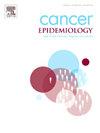基于澳大利亚和荷兰人群数据的晚期上皮性卵巢癌早期复发预测模型的外部验证
IF 2.3
3区 医学
Q3 ONCOLOGY
引用次数: 0
摘要
目的通过独立的澳大利亚和荷兰队列,对已发表的预测晚期上皮性卵巢癌(EOC)患者早期复发的术后和BRCA模型进行外部验证。方法纳入2002年1月1日至2006年6月1日在澳大利亚诊断的晚期EOC患者,以及2016年1月1日至2017年12月31日在荷兰诊断的晚期EOC患者。来自接受细胞减少手术和铂基化疗的患者的数据用于验证这两种模型。通过多次插值处理缺失数据。模型更新包括大规模的重新校准、重新校准和模型修订,并使用封闭的测试程序来确定最合适的方法。评估模型的校准、判别和Brier评分。结果澳大利亚队列(N = 1334)包括457名早期复发患者和859名晚期或非复发患者,与发展队列相比显示基线差异。术后和BRCA模型的区分都是足够的(c-statistics分别为0.69和0.70)。术后模型需要完全修正,而对于澳大利亚队列中的BRCA模型来说,大尺度的重新校准就足够了。荷兰队列(N = 1212)包括283名早期复发患者和929名晚期或非复发患者,其基线特征与发展队列相似。两种模型均表现出足够的判别性(c统计量分别为0.71和0.70)。在荷兰队列中,大规模重新校准纠正了错误校准。结论成功验证了术后和BRCA模型预测晚期EOC患者早期复发的有效性,证实了其稳健性。然而,建议更新本地数据以提高临床设置的准确性。在线计算器用于临床使用(链接1;2)的链接。本文章由计算机程序翻译,如有差异,请以英文原文为准。
External validation of prediction models for early relapse in advanced epithelial ovarian cancer using Australian and Dutch population-based data
Objective
To externally validate the published postoperative and BRCA models predictive of early relapse in patients with advanced-stage epithelial ovarian cancer (EOC) using independent Australian and Dutch cohorts.
Methods
Advanced-stage EOC patients diagnosed between January 1, 2002, and June 1, 2006, in Australia, and between January 1, 2016, and December 31, 2017, in the Netherlands were included. Data from patients who underwent cytoreductive surgery and platinum-based chemotherapy were used to validate both models. Missing data were addressed through multiple imputation. Model updates included recalibration-in-the-large, recalibration, and model revision, with a closed testing procedure to identify the most suitable approach. Model performance was assessed for calibration, discrimination, and the Brier score.
Results
The Australian cohort (N = 1334) included 457 early relapsers and 859 late or non-relapsers, showing baseline differences compared to the development cohort. Discrimination was adequate for both the postoperative and BRCA models (c-statistics: 0.69 and 0.70, respectively). The postoperative model required full revision, while recalibration-in-the-large was sufficient for the BRCA model in the Australian cohort. The Dutch cohort (N = 1212) included 283 early relapsers and 929 late or non-relapsers, with baseline characteristics similar to those of the development cohort. Both models demonstrated adequate discrimination (c-statistics: 0.71 and 0.70, respectively). Recalibration-in-the-large corrected miscalibration in the Dutch cohort.
Conclusion
The postoperative and BRCA model were successfully validated for predicting early relapse in advanced-stage EOC patients, confirming their robustness. However, local data updates are advised to enhance accuracy across clinical settings. Online calculators were built for clinical use (Link 1; Link 2).
求助全文
通过发布文献求助,成功后即可免费获取论文全文。
去求助
来源期刊

Cancer Epidemiology
医学-肿瘤学
CiteScore
4.50
自引率
3.80%
发文量
200
审稿时长
39 days
期刊介绍:
Cancer Epidemiology is dedicated to increasing understanding about cancer causes, prevention and control. The scope of the journal embraces all aspects of cancer epidemiology including:
• Descriptive epidemiology
• Studies of risk factors for disease initiation, development and prognosis
• Screening and early detection
• Prevention and control
• Methodological issues
The journal publishes original research articles (full length and short reports), systematic reviews and meta-analyses, editorials, commentaries and letters to the editor commenting on previously published research.
 求助内容:
求助内容: 应助结果提醒方式:
应助结果提醒方式:


